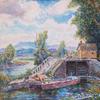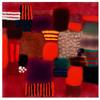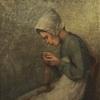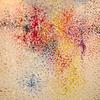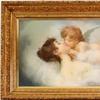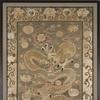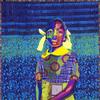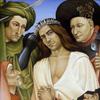More Than 100 Objects Illuminate Groundbreaking Art Collection of Financier J. Pierpont Morgan, at Wadsworth Atheneum
- HARTFORD, Connecticut
- /
- September 19, 2017
The Wadsworth Atheneum Museum of Art will celebrate the unprecedented art-collecting career of financier J. Pierpont Morgan (1837-1913) in "Morgan: Mind of the Collector." Morgan traveled the globe to collect more than 20,000 works of art in a 23-year period; his broad acquisitions included sculpture, manuscripts, rare books, prints and drawings, paintings, and decorative arts including silver, porcelain, glass, tapestries, enamels, ivories and bronzes. "Morgan: Mind of the Collector" unites more than 100 of these rare objects to illuminate Morgan's pursuit of global culture, commemorating his collecting achievements and probing an exploration of his motivations, buying decisions, and impact on the evolution of art collecting and museums in America. The exhibition is on view from Sept. 23-Dec. 31, 2017.
The founder of a banking dynasty still in operation today, J. Pierpont Morgan was one of the great financial figures of the late 19th and early 20th centuries. Well known for his business success, he was also an important philanthropist and became an avid art collector following the death of his father, Junius Spencer Morgan (1813-1890). Pierpont was born in Hartford, Conn., and his family was the third generation to support the Wadsworth Atheneum--his grandfather Joseph was one of the museum's founders. In 1889 Pierpont and his father contributed a combined $150,000 to the museum, and following Junius' death in 1890 Pierpont commissioned and funded the $1,400,000 Morgan Memorial in his father's honor, more than doubling the museum's size. These significant capital contributions are represented in the exhibition by a pair of wrought bronze and brass gates created by the pioneering Gorham Manufacturing Company of Providence, R.I., which once furnished the east entrance of the Morgan Memorial. Pierpont's ultimate gift to the Wadsworth Atheneum came in 1917, when, in accordance with his father's will, Jack Morgan dispersed more than 1,350 objects from Pierpont's collection to the Wadsworth Atheneum "for the instruction and pleasure" of the public. The transformative gift formed the core of the museum's European decorative arts collection; "Morgan: Mind of the Collector" corresponds with the centennial anniversary of that re-foundation.
"Morgan: Mind of the Collector" tells the story of Morgan's pursuits through more than 100 diverse objects, organized according to three of his collecting passions: antiquities, sacred relics, and objects with compelling historical ties. Morgan's lifelong fascination with the ancient world, experienced through a biblical lens, led him to collect art and artifacts as he traveled to Rome, Jerusalem and Egypt. A glass cameo cup on loan from The Corning Museum of Glass is known as "The Morgan Cup" (c. I-99 CE); Morgan acquired it in opposition to advisors who doubted its authenticity, and it proved to be a rare object manufactured in the ancient Roman Empire. In the same vitrine, the bronze "Draped warrior" (c. 510-500 BCE) is one of 90 ancient objects Morgan bequeathed to the Wadsworth Atheneum. Morgan's affinity for sacred relics belies his deep religiosity--he was a devout Protestant with a lifelong commitment to the Episcopal Church. Drawn to religious art, Morgan collected illuminated prayer books and missals, Bibles, and enameled and metal reliquaries including the "Reliquary of Mary Magdalene" (14th and 15th century), which is said to contain the saint's tooth and now belongs in the collection of The Metropolitan Museum of Art. A lifelong interest in European history and royalty attracted Morgan to collect objects ranging from literary manuscripts to works of art with impressive pedigrees. Also borrowed from The Met, "The Great Ruby Watch" (c. 1670) once belonged to the Baroness Alphonse de Rothschild, wife of the prominent French banker. Decorated with 85 clear rubies and painted enamel, the watch epitomizes Morgan's fondness for precious jewelry and finely wrought items. "Morgan: Mind of the Collector" is a three-dimensional exhibition with the exception of two paintings. Anthony Van Dyck's undated oil painting, "Robert Rich, Second Earl of Warwick," in the Wadsworth Atheneum's collection was conserved in the summer of 2017 to remove varnish that had discolored over time, elucidating the painting's refined details and its original subtle yet bright colors. The painting was well known by the time Morgan purchased it in 1902, and he displayed the portrait of the armor-clad Warwick--who reputedly helped to colonize Connecticut--prominently in his home at Princes Gate in London.
The diversity of Morgan's objects and more noticeably, their quantity, is evidenced in "Morgan: Mind of the Collector" by a selection of deluxe edition collection catalogues. Like many collectors of his time, Morgan, commissioned leading scholars to document his properties in limited edition volumes, making them accessible to people unable to see them in person. "The quality of Morgan's objects is exceptionally high--they are quite rare, or are of great importance to the history of art, and they are often the best of their kind," says Senior Curator and Charles C. and Eleanor Lamont Cunningham Curator of European Decorative Arts Linda Roth, who organized the exhibition. "They are also incredibly diverse, and that wide variety of objects tells a rich story of Morgan's passions and pursuits as a collector."
Public Program Highlights
The Wadsworth Atheneum will present an international symposium in conjunction with "Morgan: Mind of the Collector" Nov. 10-11, 2017, showcasing the latest research about Morgan and his impact on art collecting. The Four Nations Ensemble returns to the museum Oct. 22 to present "Redefining Rococo," featuring of program by Jean-Marie Leclair (1697-1764), Georg Phillip Telemann (1681-1767) and other period composers. Family and social programs celebrating "Morgan: Mind of the Collector" include an Oct. 5 "Art After Dark;" the Oct. 14 "Second Saturdays for Families: Think Ink" with a focus on illuminated manuscripts; and a "Gilded Age Happy Hour" adjacent to the exhibition, on Oct. 27. Visit thewadsworth.org for a complete schedule of programs and events.



